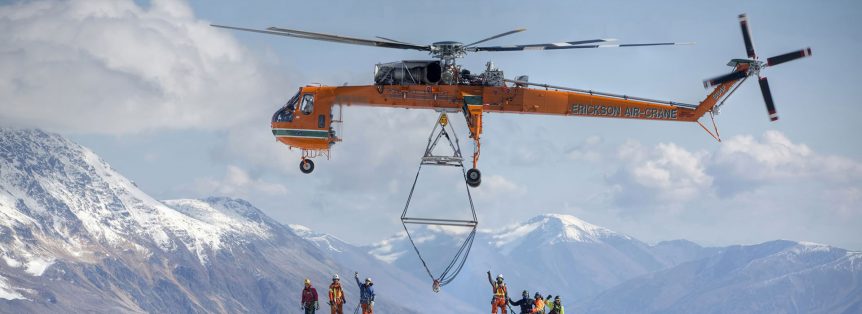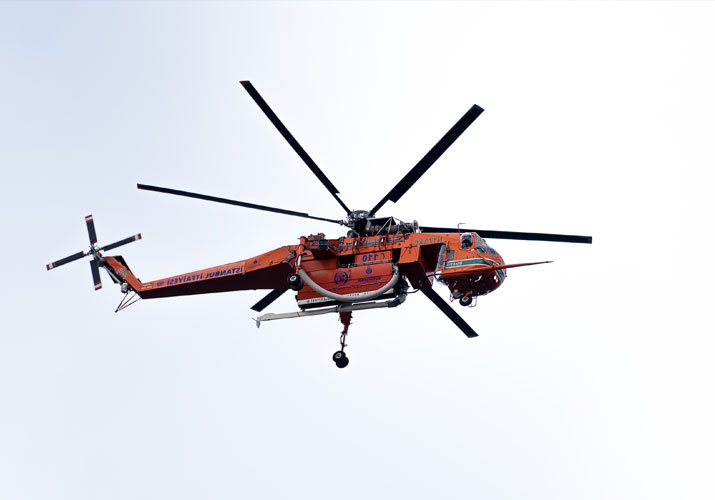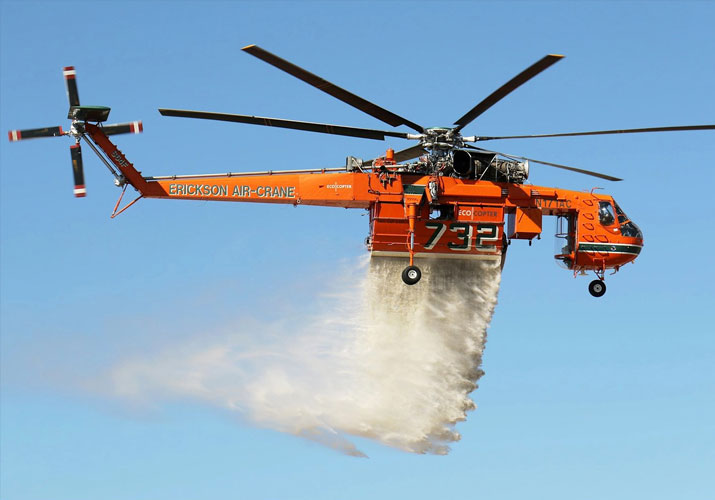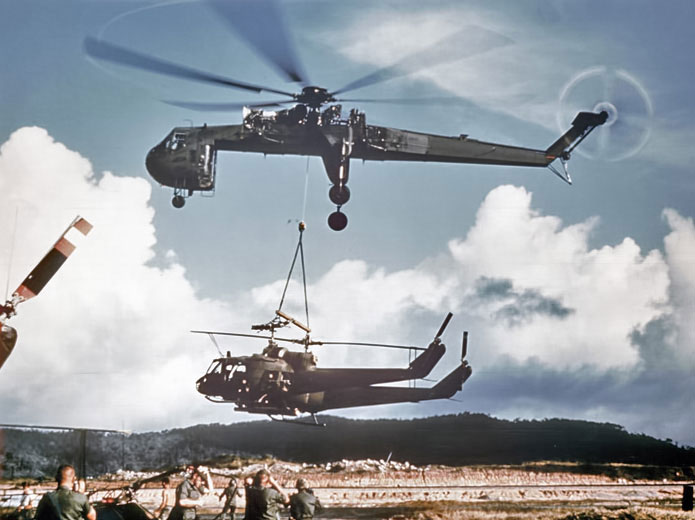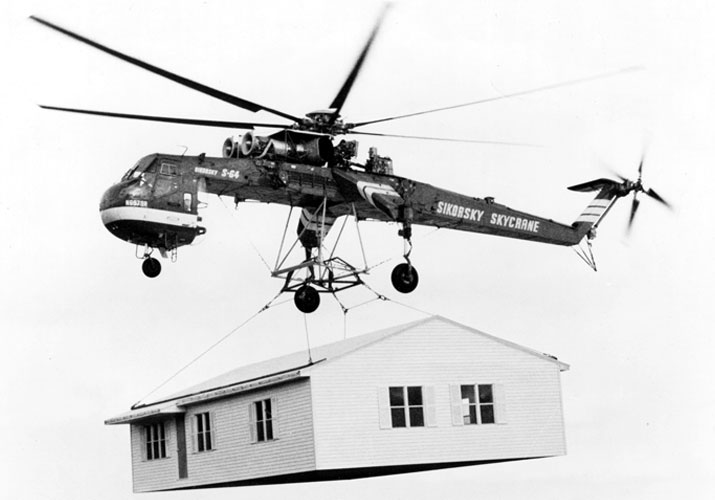The Sikorsky S-64 Skycrane
After such success emanated from the S-60 flying crane, Sikorsky receives approval to proceed with the more powerful S-64. The basic mission of this aircraft was to tackle heavy cargo transport safely, quickly, and efficiently. The first flight of the S-64 took place on May 9th, 1962. The S-64 project was developed during the ‘50s and ‘60s. During a time of war like this, the demand for STOL aircraft was a necessity that couldn’t be ignored. The S-64 quenched this need by reducing the costs, weight, and maintenance.
The S-64 Today
Today, the S-64 is employed widely across the civilian market. Over the years, the aircraft has maintained its versatility, reliability, and durability in construction, logging, firefighting, and more! The aircraft does require a pilot and copilot for flights. However, there is typically a 6 to 8 person crew for support. In 1992, the production rights for the Skycrane was obtained by Erickson Air-Crane. The total production of the Skycrane is 110, including the original three prototypes. Other models, like the S-64E, F, B, and A, have since been introduced to broaden civilian and military capabilities. On average, the S-64 has a payload capacity of around 20,000-pounds. For firefighting, there is a 2,650-gallon tank that can be filled by hover-fill snorkels.
Additional Specifications:
- Engines: 2 x Pratt & Whitney JFTD12-4A 4500 shp
- Rotor dia: 72 ft
- Length: 70 ft 3 in
- Height: 18 ft 7 in
- Empty weight: 19233 lbs
- Max wt: 42,000 lbs
- External load: 20723 lbs
- Max. speed: 127 mph at sea level
- Crew: 2
- Payload: 90 pax or 17,500 lb in detachable pod
- Payload: 22,400 lb under-slung
- Cruise: 105 mph
- Service Ceiling: 8120 ft
- Max. range: 253 miles
Heavy Lift Operations
When you find a helicopter model that works, you stick with it. Because of that, the Skycrane is a regular in the lineup for FairLifts. The effectiveness and reliability of this aircraft are unprecedented in its field. Generally, the bread and butter of Skycrane operations include firefighting. However, a close second includes construction and HVAC lifts. The S-64, however, is not suitable for just any operation. No matter how it’s flown, the S-64 is a fuel burner. At approximately 500 gallons per hour, this aircraft can be rather expensive just to crank up. That is why it is typically used in significantly larger operations that are in a pinch for time.
